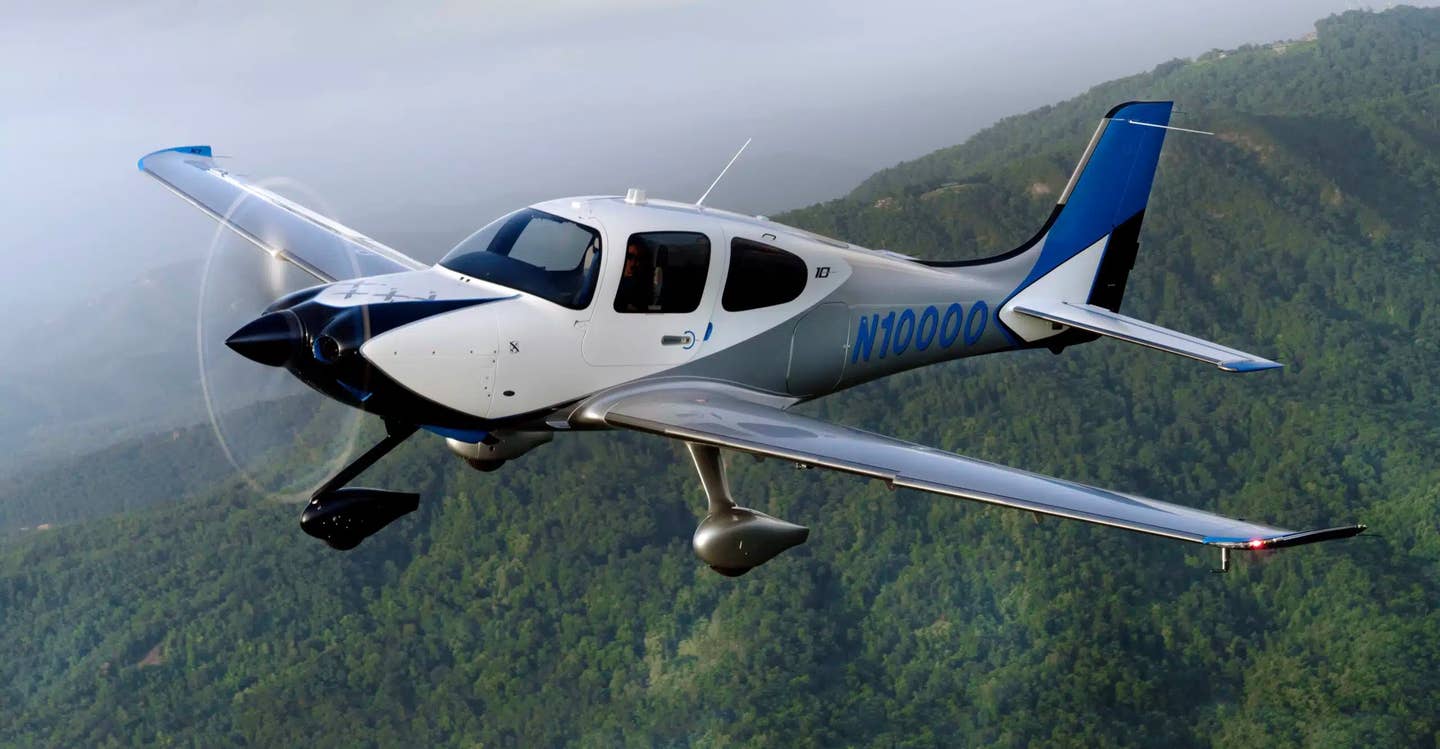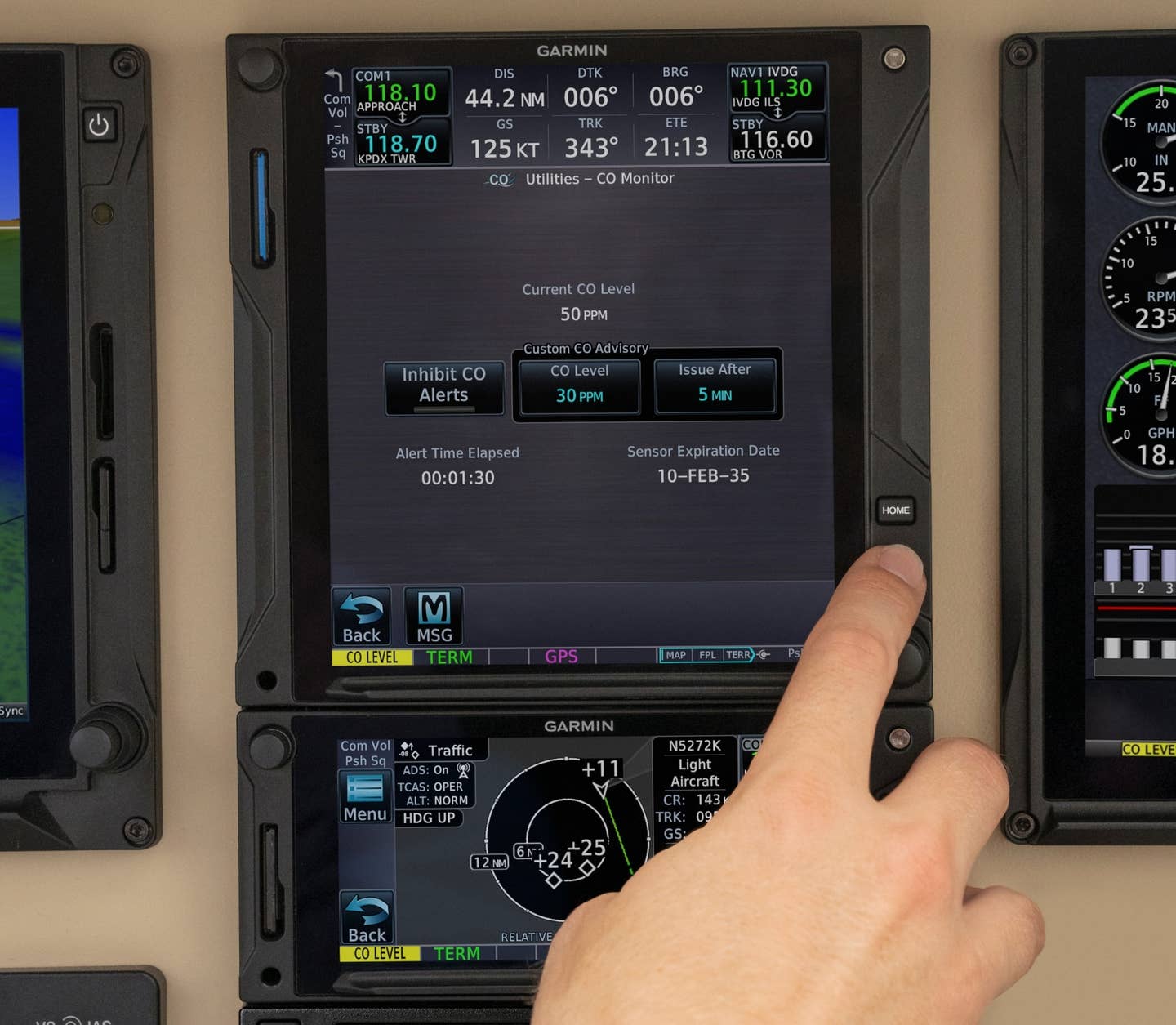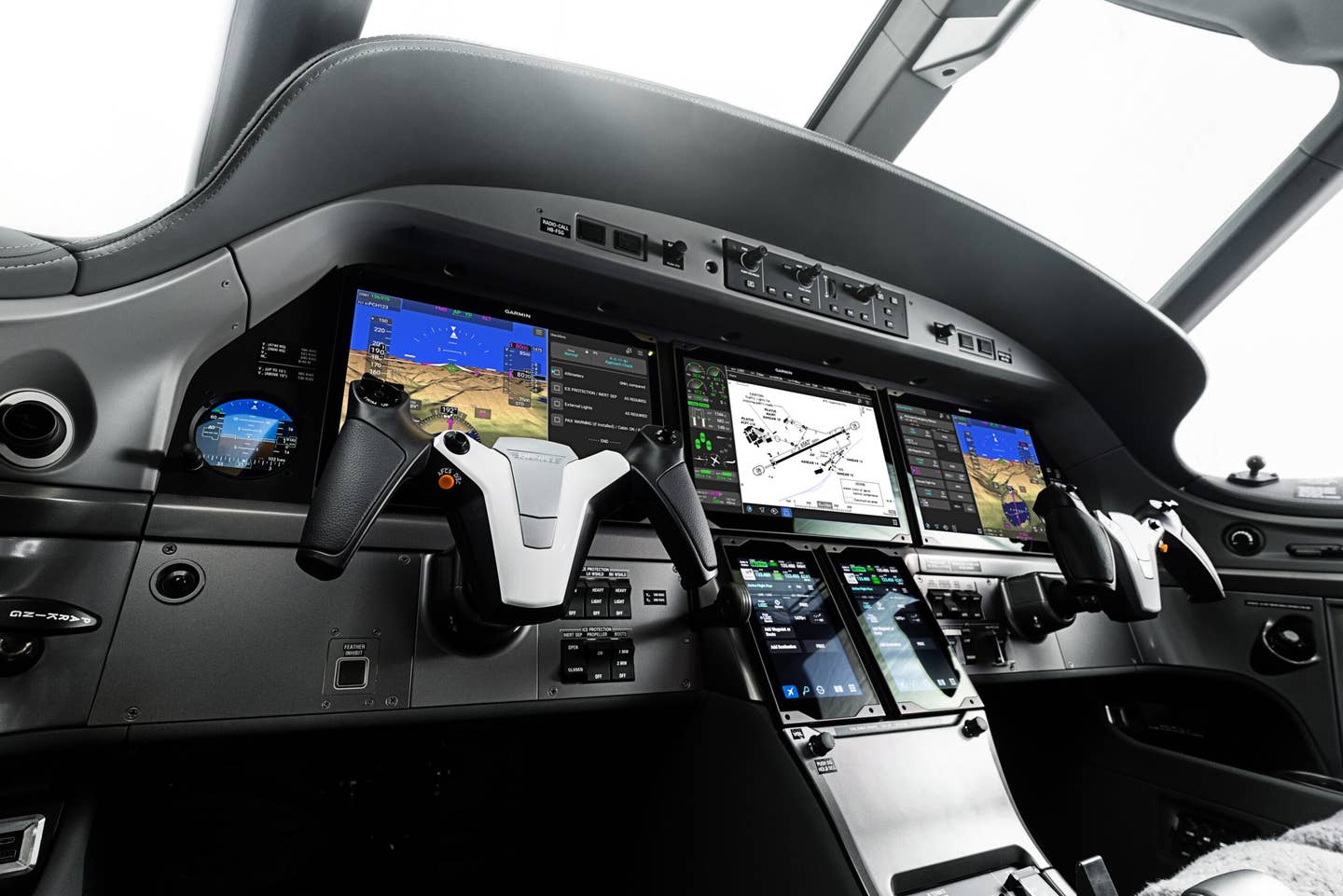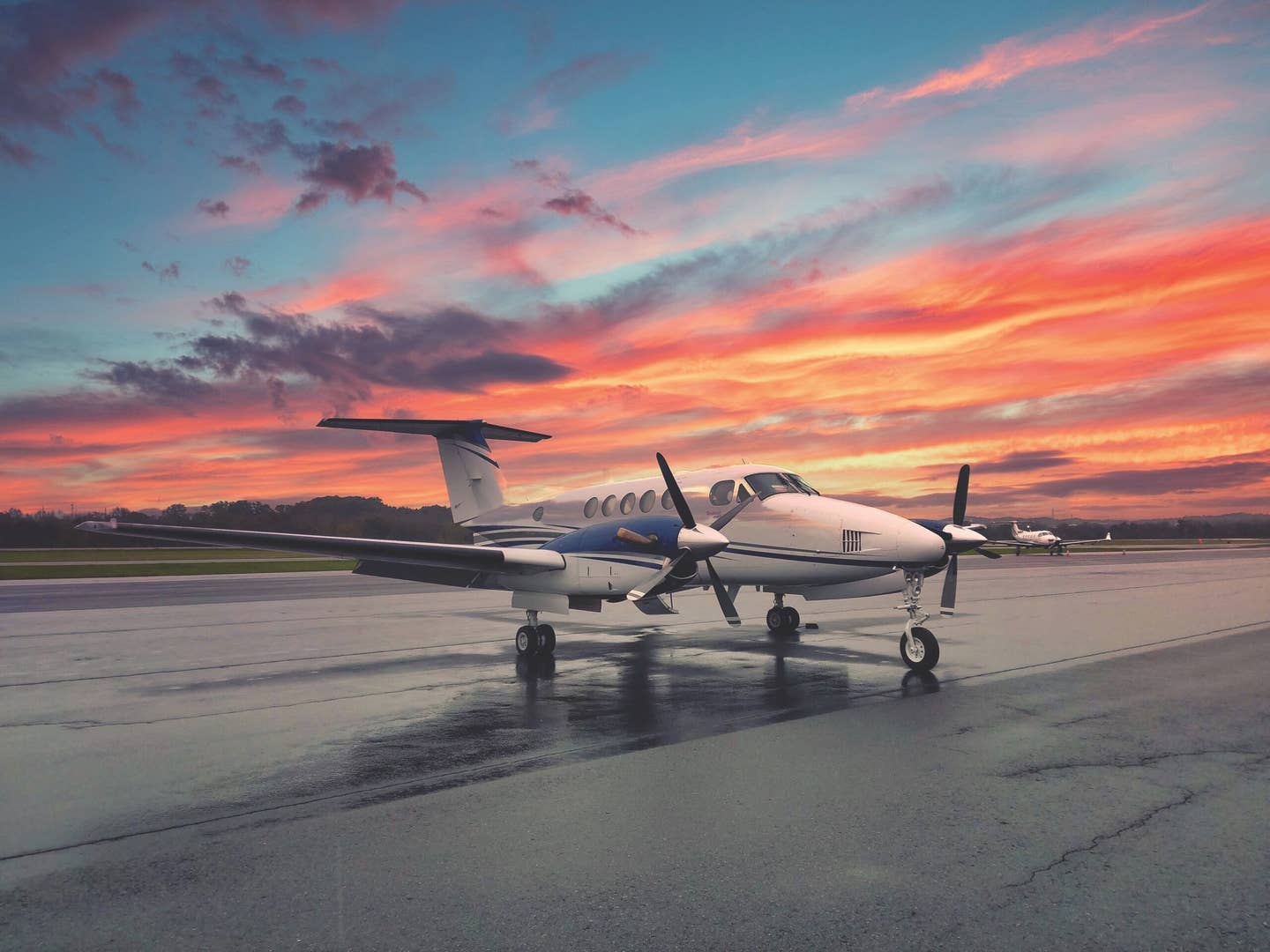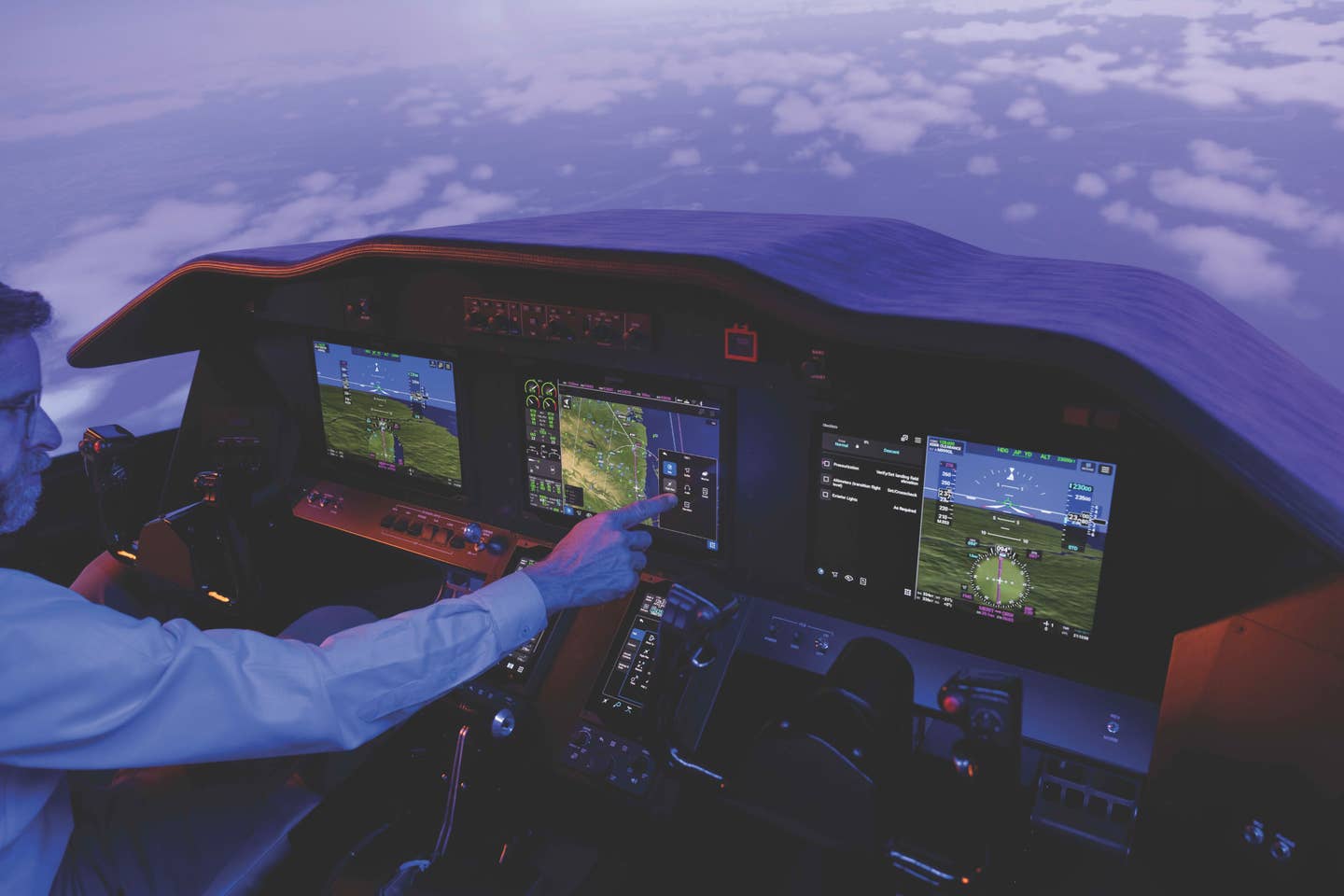
Garmin’s upgraded G1000 NXi system boasts superior computing power that makes room for more technology in the cockpit. Garmin
In the dozen or so years since Garmin’s G1000 integrated flight deck made its debut in Cessna and Diamond single-engine airplanes, the cockpit has steadily evolved to offer new features and improved displays that have managed to keep it fresh and relevant. Even in the face of Moore’s Law, the idea that suggests electronics double in speed and capability every two years, G1000 has remained at the forefront of the general aviation avionics world by changing incrementally instead of radically.
Now, it would seem, Moore’s Law has finally caught up with the original Garmin glass cockpit. The big news is the introduction of G1000 NXi, the new iteration of G1000 under development for the past 18 months, which is now certified for retrofit in the King Air 200, 300 and 350 models and is coming soon to most new airplanes delivered with G1000, including those from Cirrus, Piper, Textron Aviation, Diamond, Quest and others.
At the heart of the G1000 NXi system is a marked increase in computing power that frees avionics engineers to add technologies that until now were beyond G1000’s capabilities. To achieve this goal, Garmin has gone from single- to dual-core processors, increased G1000’s memory from 64 megabytes to 16 gigabytes (if you’re not a computer person, trust us, that’s a huge leap), and introduced all-new LRUs that can be replaced and upgraded much more quickly in the field. The changes allow Garmin to bring new features to G1000 that pilots have long been asking for. And even though the physical glass primary flight displays use the same 10-inch XGA technology as before, they look sharper, respond faster, and present information better than ever thanks to the computing horsepower behind the scenes.
Last November at the NBAA Convention in Orlando, Florida, Garmin invited me into a backroom at its show booth for a sneak preview of G1000 NXi. Nobody told me beforehand what I was about to see. Standing before the NXi avionics demonstrator, I could tell this was something very different, but I wasn’t exactly sure what all had changed. As I began playing with the buttons and knobs, the new cockpit seemed at once familiar and yet vaguely intimidating. After this brief introduction to the “new” G1000, I wasn’t quite sure what to think. Were the changes too much, I wondered?
It wasn’t long before I had the chance to take a deeper look at G1000 NXi that assuaged any concerns I might have had about the new cockpit in the beginning. Garmin brought its King Air 350 demonstrator with G1000 NXi to my home airport in December to give me the chance to try it out in a real-world setting. It was a cold and gray day when I arrived at Morristown Airport in New Jersey for my demo flight. A 500-foot overcast ceiling and 3 miles’ visibility were ideal conditions for putting the new cockpit through its paces. It was also my first chance to fly a King Air since I went to school at CAE SimuFlite in Dallas for Model 200 initial training, so I was eager to get to fly the twin turboprop.
Super-Fast Speed
My host, Scott Frye, Garmin’s sales manager for retrofit avionics programs, strapped into the left seat, and I settled in beside him as his hands danced over the controls to get the engines started and the avionics powered up. Here was the first clue I had that G1000 NXi is something different indeed. The system booted in what seemed like an instant. As I began scanning around the PFD and MFD, I was struck by how much better the overall presentation is than on previous versions of G1000, including the Perspective by Garmin avionics system in my Cirrus. The symbology is crisper, the edges of numbers and letters are nicely rounded, the map pages zoom and pan effortlessly, and menus slide pleasingly on and off the screen. Already, I was warming to this new cockpit, and we hadn’t even released the brakes yet.
“Since you’re a G1000 guy, I want you to do all the button pressing and knob twisting,” Frye told me before keying the mic and calling clearance delivery. It’s true, I am a “G1000 guy.” In fact, I was one of the first people outside Garmin to fly G1000, in early 2003 in one of the first Diamond DA40s to receive the cockpit. Since then, I’ve flown with G1000 regularly in Cessna Skyhawks, a DA40 and now my Cirrus SR22T with Perspective. I know the system well. If I had any difficulties figuring out how to use the new G1000, that would be a huge red flag for me.
When we received our IFR routing, I began inputting the flight plan and immediately realized G1000 NXi isn’t intimidating in the least. The architecture is familiar, though I would say it’s simpler as well. It might help that I’ve also flown with the G3000 cockpit in the TBM 930 and Piper M600, with which this system shares many common traits, but I found G1000 NXi to be as easy as I’d hoped.
As we began the taxi to KMMU’s Runway 5, I noted one of the first of the many new features of G1000 NXi. Garmin’s Surface Watch, first introduced in the G3000 and G5000 cockpits, provides warnings for closed runways, runways that might be too short, and touchdown and groundspeed alerts, annunciated on the displays and over the audio system. Coupled with Garmin’s SafeTaxi technology, these are excellent tools for avoiding a runway incursion and other on-airport hazards. Because of the limited computing power of earlier G1000 systems, Surface Watch and other advanced features simply weren’t available. Now they are, and in my opinion, it’s a boon for safety in a cockpit already well known for raising the safety bar.
Into the Gloom
Frye handled the takeoff and we climbed briskly into the clouds, commanding the autopilot to fly the Morristown 6 departure for the transition to our planned round-robin flight to Wilkes-Barre Scranton Airport, about 70 miles away. In moments we broke out into bright-blue skies and continued climbing to our cruise altitude of 8,000 feet in smooth air.
Once we were airborne, a new feature of G1000 NXi that struck me — and the one I was least sure about when I saw the demo back in November — was a new map presentation overlaid on the HSI that replaces the traditional inset map view. I wondered if the moving map presented underneath the HSI would be distracting. By the end of the flight, which included instrument approaches into Wilkes-Barre and back at Morristown, I decided I really like the change. If you instead prefer the traditional inset map positioned off to the left of the HSI, you can still fly with that, but having a map layered under the HSI compass rose and needles with traffic, terrain, weather or any combination you choose is actually really cool and, more important, useful for overall tactical situational awareness. I got the feeling that even Garmin isn’t sure what pilots will think about the HSI map capability, but it’s a change that makes a lot of sense to me.
Another nice enhancement included in G1000 NXi is the ability to select visual approaches from the procedures menu. This is a feature borrowed from G3000 and G5000 that will make King Air pilots’ lives much easier. If ATC clears you for a visual approach, you can select it just as you would an ILS or RNAV approach, by hitting the procedure key. The avionics will then create a 3-degree glideslope to the runway threshold with appropriate guidance cues. You can select any runway, set customized minimums, select vectors or straight-in for the final approach intercept, and fly the visual approach coupled with the autopilot. It won’t guarantee you terrain and obstacle separation, but it’s a nice feature to have.
I would have loved to try it, but on this grubby IFR day, it wasn’t in the offing. Instead, Wilkes-Barre Approach cleared us for the ILS to Runway 22. My fingers effortlessly loaded the approach as ATC vectored us for the final-approach course intercept. As we broke out of the low, broken cloud layer and descended to 200 feet above touchdown, Scott pressed the go-around button on the throttles and increased power to 80 percent. Automatically, the autopilot began to pitch up for the climb and transitioned to the missed approach, flying a coupled go-around that depicted our course toward the hold and the teardrop entry on the enormous MFD in the center of the King Air cockpit. I recalled flying similar missed-approach procedures with Rockwell Collins’ EFIS-85 avionics during my King Air training. With the simplicity afforded by G1000, the miss almost felt like cheating.
This, of course, is one of the chief reasons Garmin has had such success selling retrofit G1000 systems in the King Air market. The avionics transform great airplanes into exceptionally easy and capable ones as well. If you’ve already installed G1000 in your King Air, the good news is you can upgrade to G1000 NXi for a fraction of the price of what a full install would cost. The upgrade involves swapping out the displays for the new versions, installing a new keypad and loading new software. It’s an upgrade that a competent avionics shop can complete in a day, Frye said. If you’ll be upgrading to G1000 NXi from an EFIS-85 or electromechanical cockpit, the installation will take four to six weeks on average. In addition to all the added capabilities, pulling out the old instrumentation and replacing it with G1000 NXi components will provide a weight savings of about 250 pounds on average, Garmin says.
G1000 NXi Options
The system also provides an upgrade path for ADS-B compliance that includes extra flexibility. It can use two GTX 335R units that provide ADS-B Out capability to meet the FAA’s 2020 mandate, as well as a GTX 345R that provides ADS-B In for FIS-B traffic and subscription-free weather capability. The King Air I flew also was equipped with TCAS II, which integrates with ADS-B and Garmin-specific features, including TargetTrend, which provides a more intuitive method of judging target trajectories and closure rates, and TerminalTraffic, a view of ADS-B-equipped aircraft and ground vehicles on and around the airport.
An option that should prove popular is Garmin Connext wireless cockpit connectivity, which utilizes the Flight Stream 510 unit for wireless transfer of aviation databases from the Garmin Pilot app on a mobile device to G1000 NXi. Flight Stream 510 also supports two-way flight-plan transfer, as well as the sharing of traffic, weather, GPS information, backup attitude information and more between G1000 NXi and compatible mobile devices running the Garmin Pilot or ForeFlight Mobile apps. There’s a dual-chart option to display Jeppesen or Garmin charts, and for the first time, G1000 is offered with digital IFR en route and VFR sectional charts. An optional Platinum package bundles synthetic vision, Jeppesen ChartView and the Flight Stream 510 technology.
After we completed a turn in the hold at KAVP, we returned to Morristown to shoot the RNAV GPS Runway 5 approach. This time I was in charge as we descended through the murk toward the runway. I found the situational awareness afforded by the large 15-inch center MFD and new enhanced HSI map to be a welcome improvement. A few other nice features I noted during the demo are comm-frequency decoding below the frequency that tells you who you’re talking to, and a new approach to buttonology that shows a green bar when a feature is turned on rather than making the selection gray, which some pilots confuse with meaning “off.” The joystick on the keypad is also slightly taller, and panning is smoother, making for an improved experience. They’re small changes, but they add up to a big improvement overall.
As I came over the numbers at Morristown at 100 knots, I got lucky and greased the landing. We taxied back to the ramp as I thought more about the changes to G1000 that Garmin has made. Despite all the added capabilities, the transition for pilots should be extremely smooth. Nobody who’s flown with G1000 in the past will need to sit through a ground-school course to make the transition, and that’s part of the beauty of how G1000 continues to evolve through the years. I would imagine that NXi eventually will become the standard in new airplanes across the world of general aviation, and the “old” G1000 will start to become less appealing as more pilots clamor for the advanced technologies of today as well as those that are sure to be offered by Garmin in the future, some of which we probably can’t even yet fathom. I’m cool with that.
HSI MAP OVERLAY
The change we liked best in G1000 NXi is the moving map on the HSI that can overlay traffic, terrain, weather and more.
FREQUENCY ID
Note the word “approach” below the nav frequency on the PFDs. The feature lets you know at a glance who you’re talking to.
VISUAL APPROACHES
IFR visual-approach capability lets you select an arrival to any runway and follow a 3-degree glidepath to the threshold.
FLIGHT STREAM 510
Garmin Connext lets you wirelessly upload nav databases, transfer flight plans to and from a tablet, and share flight data.
FASTER PROCESSORS
All-new dual-core processors and more computer memory allow features that weren’t possible in the past.
IMPROVED VISUALS
The PFDs are the same as before but look crisper due to better processors. The 15-inch XGA MFD is higher-resolution.

Sign-up for newsletters & special offers!
Get the latest FLYING stories & special offers delivered directly to your inbox

